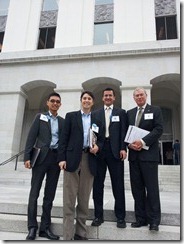By Darren Morrow
If you own rental properties or have other similar passive activities that generate a loss each year and you want to be able to utilize that loss, then grouping activities may be a good option for you.
Grouping activities is the process of treating one or more passive trade or business activities, or rental activities, as a single activity, including rental real estate. This can only be done if those activities form an appropriate economic unit for measuring gain or loss under the passive activity rules. The simple definition of an economic unit is activities that are similar in nature, industry, and control. See IRS publication 925 for specific criteria regarding what constitutes and economic unit.
Grouping is important for a number of reasons. If two activities are grouped into one larger activity, you need only show that you materially participate in the activity as a whole. But if the two activities are separate, you must show that you materially participate in each one of the activities individually. This is especially beneficial if you own multiple rental properties and are trying to qualify for the material participation test or active participation test. Qualifying for these tests may allow you to potentially recognize all of the losses in the year incurred (materially participating real estate professional) or up to $25k of losses in the year incurred (active participation test). Grouping can also be important in determining whether you qualify for the 10% ownership requirement for actively participating in a rental real estate activity .
One of the downsides to look out for when grouping your activities is if you plan on disposing of one of your activities that accumulated suspended passive losses before it was grouped with other activities. If you group two activities into one larger activity and you dispose of only one of the two activities, then you are considered to have disposed of only part of your entire interest in the activity. In this case, you are not allowed le to recognize the previously suspended passive losses of the disposed of activity since it is now considered part of the one larger activity. But if the two activities are separate and you dispose of one of them, then you are considered to have disposed of your entire interest in that activity and are able to recognize the suspended passive losses associated with the disposed of activity.
To group an activity all you need to do is file a written statement with your original income tax return for the first tax year in which two or more activities are originally grouped into a single activity. The statement must provide the names, addresses, and employer identification numbers (EIN), if applicable, for the activities being grouped as a single activity. In addition, the statement must contain a declaration that the grouped activities make up an appropriate economic unit for the measurement of gain or loss under the passive activity rules.
Certain activities are restricted from being be grouped. They are listed below:
– Motion picture films
– Farming
– Leasing 1245 property
– Oil and Gas resources
– Geothermal deposits.
For more information about grouping passive activities and material participation please contact us at http://www.ntcpas.com or contact our offices at (714) 836-8300.

